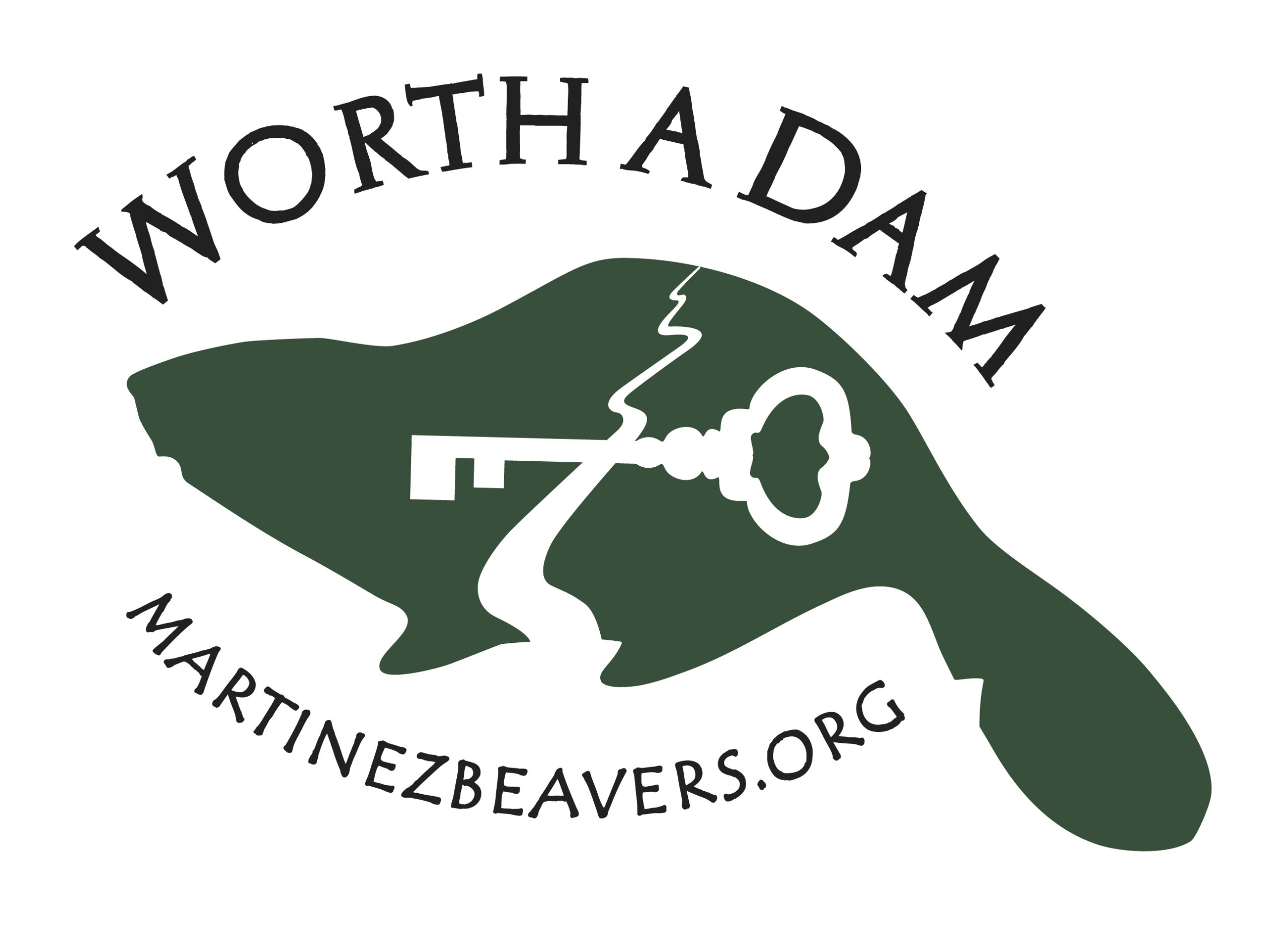 Last night’s visitors from San Francisco were 30 high school students with backpacks and notebooks who came to see the beavers.They were accompanied by their energetic and fearless teacher/handler Catherine Salvin. I gave a little talk on the footbridge about beavers as ecosystem engineers and described their physical adaptions to
Last night’s visitors from San Francisco were 30 high school students with backpacks and notebooks who came to see the beavers.They were accompanied by their energetic and fearless teacher/handler Catherine Salvin. I gave a little talk on the footbridge about beavers as ecosystem engineers and described their physical adaptions to  life in the water. Then Jon took them on a tour of the dam and up to ward street to look for the kit. On the way she made sure they sketched the dam, the flow device, and the chewed trees.
life in the water. Then Jon took them on a tour of the dam and up to ward street to look for the kit. On the way she made sure they sketched the dam, the flow device, and the chewed trees.
There were some great questions, some appreciative listeners and a few who predictably couldn’t have been more bored. They had read the New York Times article beforehand, and were fairly schooled in the basic story. (Someone couldn’t exactly remember the word and said they were ecosystem technicians, which I loved.) I’m happy to say that not one student thought beavers eat fish or live in the dam. That’s Catherine right front below.
 After their tour our smaller yearling made several appearances, swimming obligingly and foraging for them to watch. When it first emerged 30 noisy bodies trampled for a closer look and it dove immediately. I was surprised how quickly they learned to watch silently so they could see and sketch the beaver at leisure. A second beaver appeared later on and a great egret fished ostentatiously at the bridge during the quiet moments.
After their tour our smaller yearling made several appearances, swimming obligingly and foraging for them to watch. When it first emerged 30 noisy bodies trampled for a closer look and it dove immediately. I was surprised how quickly they learned to watch silently so they could see and sketch the beaver at leisure. A second beaver appeared later on and a great egret fished ostentatiously at the bridge during the quiet moments. 
All in all it was a good night, for beavers, for ecological education and for Martinez. Thanks WALC!
This morning I heard from Robin that the second wave of depredation permits for beavers (the not-computerized ones that had to be scanned by hand) had arrived. She wrote,
“Yes, we have Region 4 well represented with counties Kern, Fresno, San Luis Obispo, Madera. Also Region 6 with Mono county. Nothing in the Southern coastal region- Los Angeles to San Diego.”
What does this mean? 4 – Central Region Serving Fresno, Kern, Kings, Madera, Mariposa, Merced, Monterey, San Benito, San Luis Obispo, Stanislaus, Tulare and Tuolumne counties. Region 6 Serving Imperial, Inyo, Mono, Riverside and San Bernardino counties. That means permission to kill the water-savers in the driest regions of the state. Robin will generously donate her weekend to get the stats together. But she can’t possibly go fast enough for me.
I recently was talking to a reporter from the guardian about depredation in California, and she wanted to know if the numbers were going up or down. I realized we couldn’t know for sure, but might glean something from earlier records. I don’t have access to earlier depredation permits, but I do have the stats from a FOIA request by reporter Thomas Knudson on beavers killed by the USDA in 2010. Comparing the two is kind of like apples and oranges, because one is ‘permission given’ and the other is actual beavers killed, and just because a permit is issued the beavers could be killed by someone else and never wind up in the USDA stats. Think of it like “All mothers are women” but “not all women are mothers” grouping problem. Remember the column on the left is the actual number of beavers killed by USDA. And the column on the right is the number of depredation permits issued (which might valid for an unlimited number of beavers).
However you slice it, we still have our grim winner:
 So Placer county is still the leading beaver killer in the entire state. No surprise there. Even more interesting to me is second place. USDA killed 108 beavers in Colusa County in 2010. But in 2013 the entire county got only got 4 permits. What gives? Did they suddenly have a change of heart and think that killing beavers was wrong? No indeed. Those 4 permits were issued for the incredible number of 94 beavers PLUS one unlimited wildcard of dead beavers. And they were all awarded to USDA. Let’s assume that those US killers are good at their job and always get their beaver. 94 + X (make that at least least 10 probably a lot more) and that puts them right back in their number 2 spot.
So Placer county is still the leading beaver killer in the entire state. No surprise there. Even more interesting to me is second place. USDA killed 108 beavers in Colusa County in 2010. But in 2013 the entire county got only got 4 permits. What gives? Did they suddenly have a change of heart and think that killing beavers was wrong? No indeed. Those 4 permits were issued for the incredible number of 94 beavers PLUS one unlimited wildcard of dead beavers. And they were all awarded to USDA. Let’s assume that those US killers are good at their job and always get their beaver. 94 + X (make that at least least 10 probably a lot more) and that puts them right back in their number 2 spot.
Some things never change.






